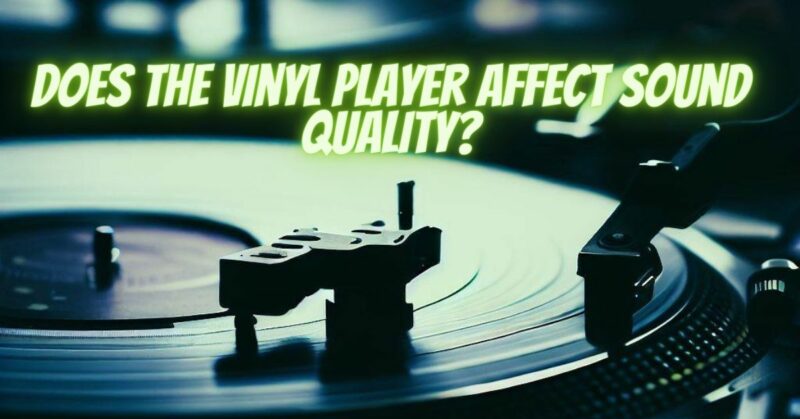The revival of vinyl records has brought forth a renewed appreciation for analog music playback. Central to this renaissance is the vinyl player, also known as a turntable. With its mesmerizing spinning platter and delicate stylus tracing the grooves, the turntable is often romanticized as a vessel for pure sound. However, the question arises: does the vinyl player truly affect sound quality? In this article, we’ll delve into the factors that contribute to the sonic experience and explore how the turntable can influence the quality of sound you hear.
Components of Sound Quality
To understand the role of the vinyl player in sound quality, it’s crucial to grasp the key components that contribute to the sonic experience:
- Vinyl Record: The physical grooves on the vinyl record store the audio information. The quality of the pressing, mastering, and overall condition of the record significantly impact sound quality.
- Stylus and Cartridge: The stylus (needle) and cartridge are responsible for translating the grooves’ physical contours into electrical signals. The choice of stylus and cartridge, as well as their alignment, affects the accuracy of this translation.
- Turntable Components: The turntable consists of various components, including the motor, platter, tonearm, and bearings. Each of these components contributes to the stability, rotation accuracy, and vibration control of the turntable.
- Amplification and Speakers: The amplified audio signals are sent to your amplifier or receiver, which in turn drives your speakers or headphones. The quality of amplification and speaker components plays a significant role in the final sound quality.
Turntable’s Influence on Sound Quality
The turntable indeed has an impact on the sound quality, albeit within certain boundaries:
- Speed Accuracy: A high-quality turntable maintains accurate and consistent rotational speeds (33⅓ and 45 RPM). Speed variations can affect pitch and overall sonic balance.
- Vibration and Isolation: Turntable vibrations can lead to unwanted resonances and distortions. High-end turntables incorporate isolation mechanisms to minimize external vibrations.
- Tonearm and Tracking: The tonearm’s design, build, and tracking ability determine how well the stylus follows the record’s grooves. Proper alignment and adjustment are crucial to minimizing distortion.
- Platter and Bearings: The platter’s stability and bearing quality impact rotational consistency and minimize unwanted noise.
- Build Quality: A well-constructed turntable with quality materials can minimize resonances and contribute to cleaner sound reproduction.
Understanding Balance and Synergy
It’s important to recognize that sound quality is a result of the overall synergy between components. The turntable is just one piece of the puzzle. The cartridge, stylus, record quality, amplification, and speakers all interact to create the final sonic experience. Neglecting any of these elements can diminish the overall quality, even if you have a high-end turntable.
In the grand scheme of audio reproduction, the turntable does play a role in affecting sound quality. It influences factors such as speed accuracy, vibration control, and tracking precision. However, the vinyl player’s impact is interconnected with the quality of other components, including the record, stylus, cartridge, amplification, and speakers. A holistic approach to audio setup, with attention to all elements, is crucial for achieving the best possible sound quality. Ultimately, it’s the collective harmony of these components that allows the vinyl player to truly shine and deliver the enchanting analog experience audiophiles cherish.


